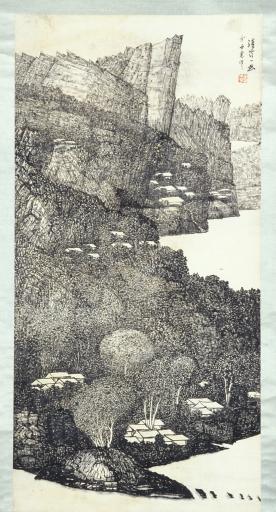A Song in the Clear River, Yu Chengyao
Artwork Overview
Yu Chengyao, artist
1898–1993
A Song in the Clear River,
early 1960s
Where object was made: Taiwan, China?
Material/technique: paper; ink
Dimensions:
Image Dimensions Height/Width (Height x Width): 119 x 59.5 cm
Image Dimensions Height/Width (Height x Width): 46 7/8 x 23 7/16 in
Mount Dimensions (Height x Width x Depth): 190.5 x 77.5 cm
Mount Dimensions (Height x Width x Depth): 75 x 30 1/2 in
Image Dimensions Height/Width (Height x Width): 119 x 59.5 cm
Image Dimensions Height/Width (Height x Width): 46 7/8 x 23 7/16 in
Mount Dimensions (Height x Width x Depth): 190.5 x 77.5 cm
Mount Dimensions (Height x Width x Depth): 75 x 30 1/2 in
Credit line: Gift from the Ssu-ch'uan-ko Collection
Accession number: 1995.0050
Not on display
If you wish to reproduce this image, please submit an image request

